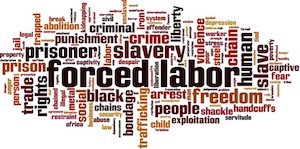By Adrienne Braumiller, Founder & Partner, Braumiller Law Group
U.S. Customs and Border Protection (“CBP”) released its first set of guidance relating to the Uyghur Forced Labor Prevention Act (“UFLPA”), which is set to take effect on June 21, 2022. CBP’s guidance takes the form of a website that is a homepage for UFLPA-related guidance, FAQs, webinars, graphics, and CBP contact information. This essential UFLPA homepage can be accessed at: www.cbp.gov/trade/forced-labor/UFLPA.
What is the UFLPA?
The UFLPA prohibits the importation of goods made in the Xinjiang Uyghur Autonomous Region of the People’s Republic of China (“XUAR”) based on the presumption that all goods made in the region are made with forced labor. The Act establishes a rebuttable presumption that the importation of any goods, wares, articles, and merchandise mined, produced, or manufactured wholly or in part XUAR or produced by certain entities, is prohibited by 19 U.S.C. 1307 and that such goods, wares, articles, and merchandise are not entitled to entry to the United States.
Additionally, the UFLPA taps an interagency Forced Labor Enforcement Task Force (“FLETF”) to submit to Congress a strategy for supporting CBP’s enforcement of the Act. CBP has already requested $70.3 million for additional employees, technology, and training, a fund that is backed by the Congressional Commission on China Leadership, including Sen. Jeff Merkley, D-Ore., Sen. Marco Rubio, R-Fla., Rep. James McGovern, D-Mass., and Rep. Christopher Smith, R-N.J.
Advanced Notice Letters to Importers
CBP sent guidance letters to importers that regularly import goods from the XUAR to the agency’s knowledge. The letters contained standard language applicable to all importers and put them on notice that their goods may be subject to the UFLPA. There is a version directed to Customs Trade Partnership Against Terrorism (CTPAT) members, which warns members could be kicked out of the program if they do not comply with the UFLPA. In each letter, CBP warns of the consequences of failing to comply with the UFLPA, which include seizure, forfeiture, and/or penalties. With a focus on compliance, the letters also provide:
“It is incumbent upon you as an importer to apply due diligence, effective supply chain tracing, and supply chain management measures to ensure that such imports are free from any goods mined, produced, or manufactured wholly or in part with forced labor from the People’s Republic of China, especially from the XUAR.”
However, the standard language of the letters published on CBP’s website does not include specific measures that companies can take to ensure their goods are compliant with the UFLPA. Although CBP did not send an Advanced Notice Letter to every importer, all importers are required to comply with the UFLPA.
Detention & Seizure Procedures for Goods from the XUAR
Unlike the detention procedures of goods subject to a Withhold Release Order (“WRO”), which are described under 19 C.F.R. 12.43-44, goods detained under the UFLPA follow the general detention and seizure procedures for most imported merchandise that is outlined under 19 C.F.R. 151.16. One of the key differences between the procedures is that Importers only have 30 days to appeal when goods are detained for non-compliance under the UFLPA (although an extension can be granted), while Importers are afforded 3 months under a WRO to contest admissibility. In either case, the importer has the opportunity of exporting the goods within the applicable deadlines (noted here) rather than seeking to have the goods released. Given that the burden of proof to obtain this release under the UFLPA rises to the level of “clear and convincing” and where met, triggers a reporting requirement on CBP to both the Congress and the Public, most Importers will choose to export.
Recommended Compliance Actions
Although not specifically prescribed by CBP, all importers should be taking measures to comply with the UFLPA by ensuring that their merchandise, as well as the materials or inputs of their merchandise, were not made in the XUAR. We recommend that importers take the following compliance actions in preparation for the UFLPA to take effect on June 21:
- Review suppliers and upstream supply chains by periodically auditing vendors for the origin of their goods, changing suppliers if using forced labor, and vetting new vendors with forced labor questionnaires. This includes conducting due diligence searches and third-party verifications of suppliers and subcontractors.
- Add language in buying contracts that prohibits forced labor products and for products to be sourced from the XUAR and extend the language to include materials and services from subcontractors.
- Conduct annual (or more frequent) audits for forced labor and XUAR sourcing. Include factory interviews with the workers at the factories in China to confirm that they are working voluntarily, free from the threat of penalties and show proof that their answers were not influenced by their employers.
- Adopt or amend written compliance manuals, procedures, and other action-oriented written guidance, which should include a high-level statement of policy from senior management demonstrating the company’s commitment to not using forced labor in its supply chain. This includes hiring a trade compliance manager or expert team and providing training for employees and subcontractors regarding forced labor compliance.
- Trace the origin of current merchandise by compiling a detailed document trail containing the commercial invoices, production documents, wage information (such as timecards or pay stubs of the factories abroad), videos and/or photo evidence of the merchandise being produced at the factory in China (or abroad), bills of material, sales contracts and purchase orders, and airwaybills or bills of lading for materials shipped to the manufacturing facility abroad.
Additionally, importers should beware of the risks of the industries in China using forced labor, such as industries for quartz, cell phones, tomatoes and other foods, computers, cotton, silicon products, and textiles. For updates regarding forced labor and CBP’s enforcement, visit: https://www.cbp.gov/trade/forced-labor.
Read more articles by this author: https://www.braumillerlaw.com/author/adriennebraumiller/

